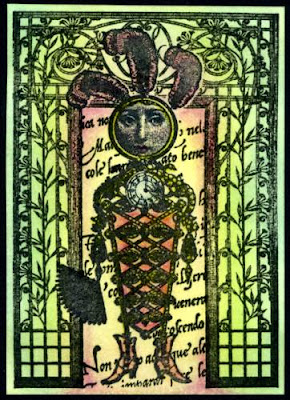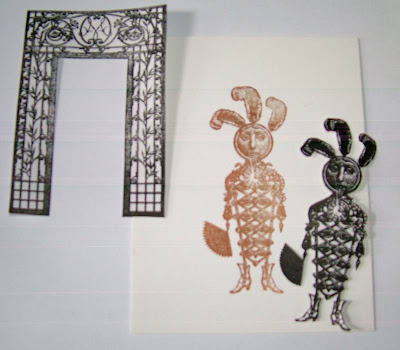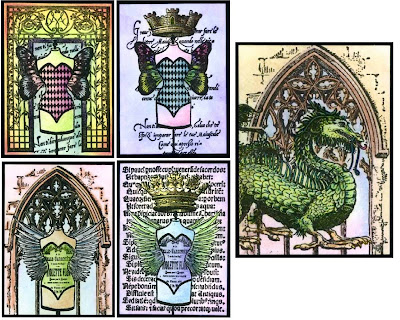My newest Victorian Articulated Paper Doll
(believe to be the actress Della Fox) arrived in the mail today.
 |
| After - This is what she looks like after lots of digital repairs |
This large Victorian doll was made by L&B (Littauer & Boysen - Berlin c 1887 - 1920) in Germany around the the turn of the century and in this particular example her paper has gotten very brittle over time; so unfortunately she was damaged in shipping and has a broken arm.
She had a few other issues: The vintage brads she was put together with had started to corrode causing some issues to the paper. The holes in the arms were put in the wrong place and the brads used were way to large causing the doll to have huge holes where there should only have been small ones. She also lost part of a finger on the gloved hand that is damaged. However - for being over 100 years old she is still in hanging in there.
 |
| Before - This is what she looked like after I took her brads out and scanned her |
Originally when this doll was produced she was intended to come with blue gloved hands and bloomered legs that had blue stockings and shoes to match her bodice. This doll also came in several sizes. The one I purchased is the largest and would make a doll @14 inches tall after she is assembled.
 This is what a set of the smallest sized dolls would have originally looked like. Note- the smaller dolls are wearing necklaces. The larger versions of these dolls would be almost identical except that I'm finding that they don't have necklaces.
This is what a set of the smallest sized dolls would have originally looked like. Note- the smaller dolls are wearing necklaces. The larger versions of these dolls would be almost identical except that I'm finding that they don't have necklaces.
The great thing about the doll I just received is that she came with black gloved hands and black stockinged legs with ballet slippers. These limbs were originally a separate purchase as a double set you could use with your existing dolls. L&B model number for these were #2785
 This is what a set of original Black stocking limbs would have looked like.
This is what a set of original Black stocking limbs would have looked like. I'm still looking to add an uncut set of these to my growing collection.
I was sad to see my new doll had been damaged in shipping; however I still find her to be a lovely addition even with all her flaws. The good thing is I will be able to fix all her issues in photo shop and print good quality pieces to use in my altered art projects.
I'm always looking to add more of these dolls to my collection or for additional information about these L&B Dancing Dolls; so please leave a comment if you can tell me more.
Grins and Giggles
Evelyn (EKDuncan)






































